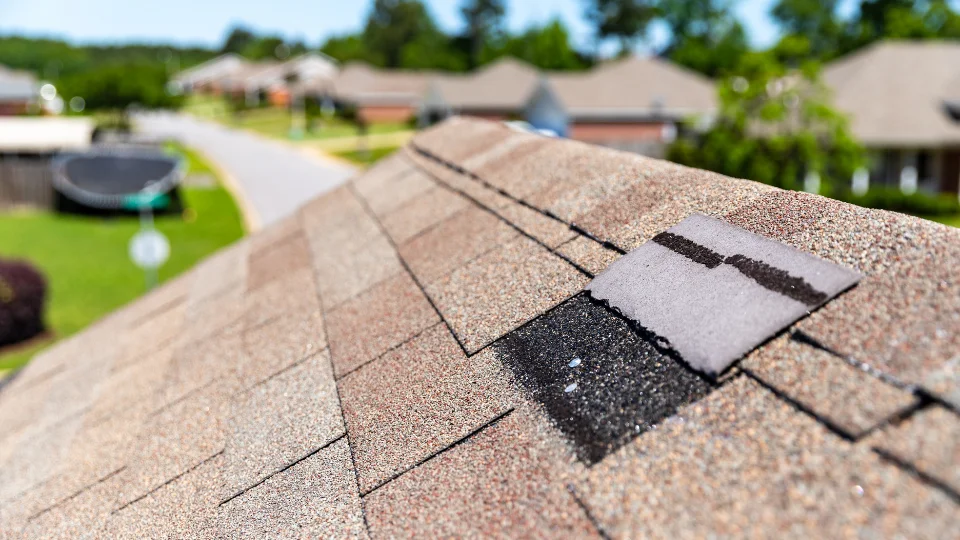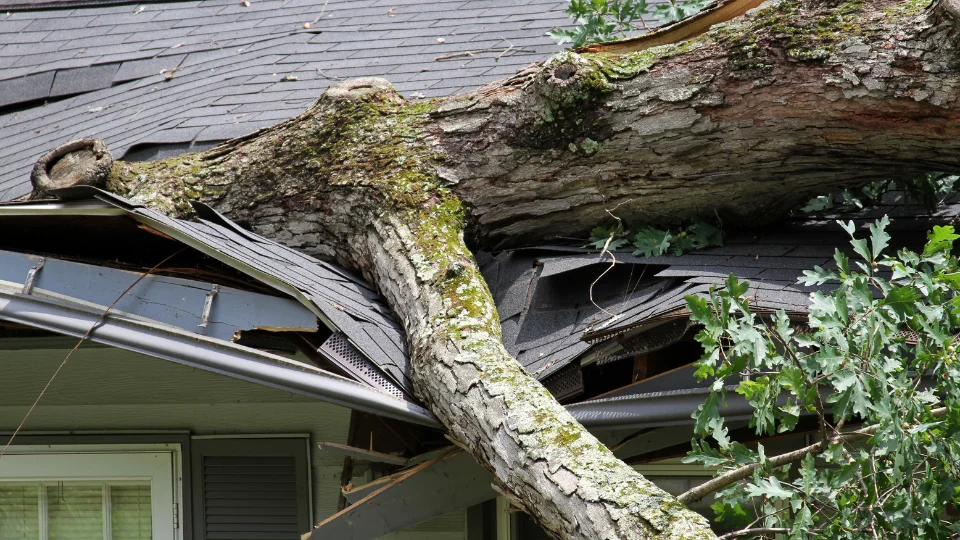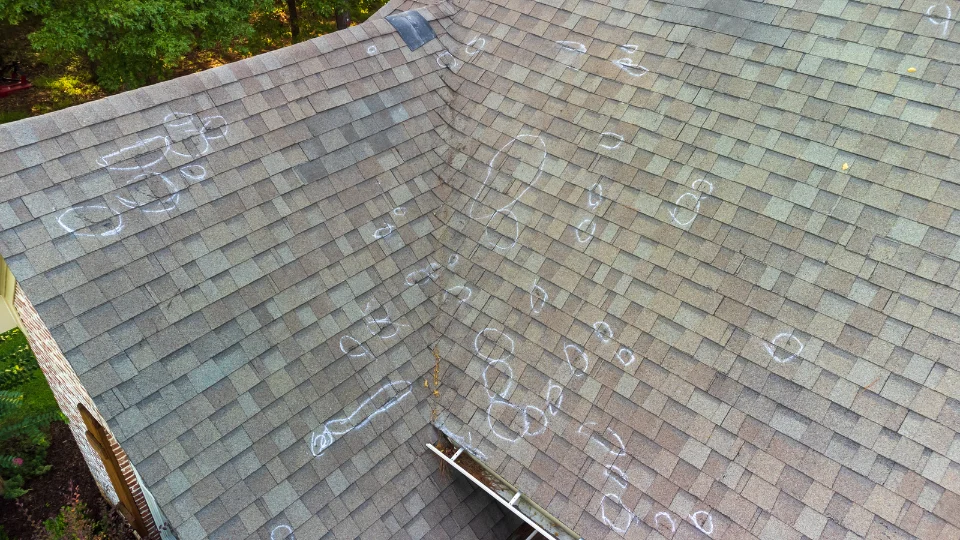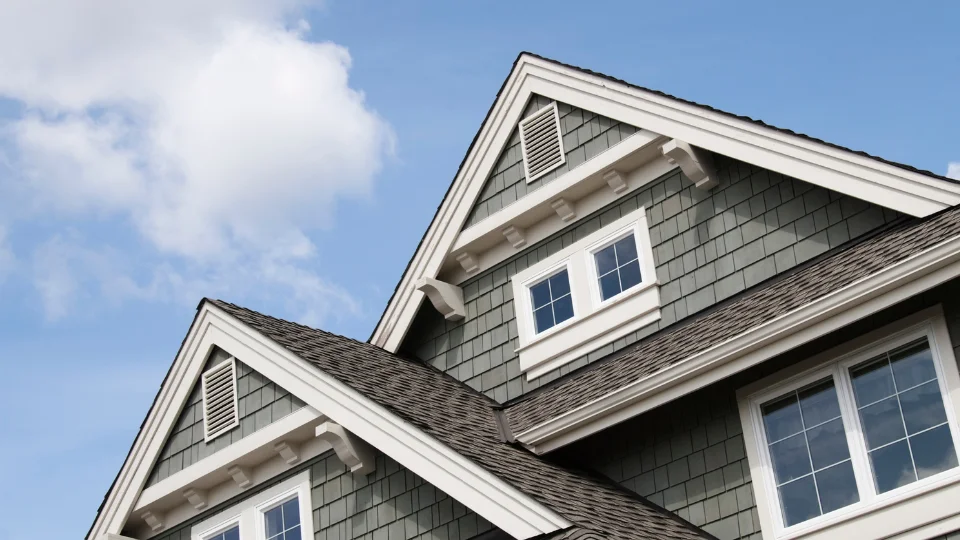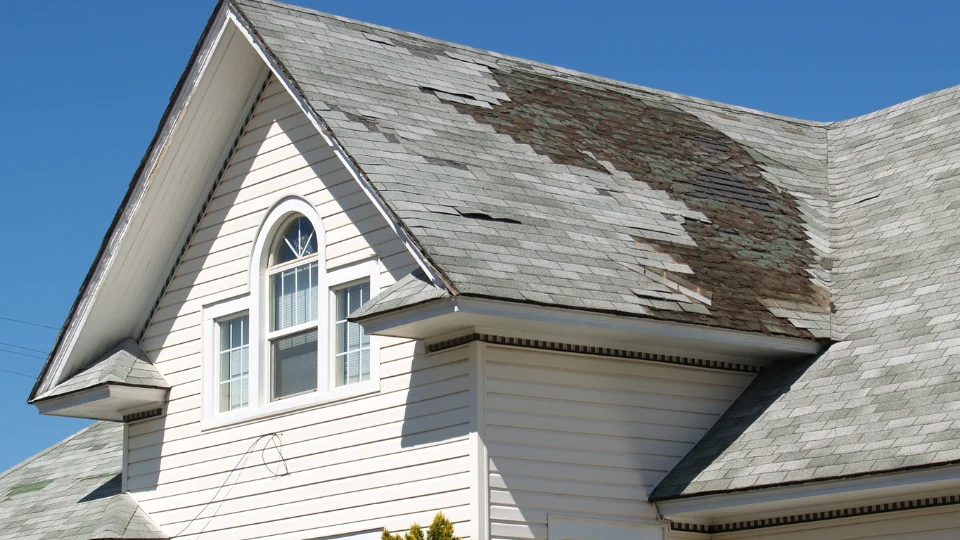Storms can wreak havoc on homes, with roofs often bearing the brunt of the damage. Every year, thousands of homeowners face the daunting task of repairing their roofs after severe weather events. Knowing how to spot signs of storm damage can save you time, money, and stress. In this guide, we’ll walk you through the most common indicators of roof damage, what steps to take if you spot them, and how to prepare your roof for future storms.
Common Signs of Storm Damage to Roof
Storm damage doesn’t always show itself in obvious ways, but certain telltale signs can reveal when your roof needs attention. From missing shingles to damaged gutters, here’s what to look for:Contact Us
1. Missing or Damaged Shingles
High winds and hailstorms are notorious for causing shingles to crack, break, or go missing altogether. Damaged shingles leave your roof vulnerable to leaks and structural issues. If you notice shingles that are curled, cracked, or completely gone, it’s time to act.
Inspect your roof after a storm, paying special attention to areas where shingles might look discolored or uneven. This could indicate bruising from hail impact. Don’t delay in addressing these issues—what starts as a small problem can escalate quickly if left unchecked.
2. Water Leaks
One of the most apparent signs of storm damage is water leakage. Water stains on your ceilings or walls are often the first clues that your roof isn’t keeping the elements out. These leaks not only damage your home’s interior but can also lead to mold and mildew if not addressed promptly.
After a storm, check your attic for signs of moisture or a musty smell. Even minor leaks can snowball into significant damage if ignored.
3. Granule Loss
Shingles are coated with tiny granules that help shield them from the sun’s UV rays and harsh weather conditions. After a storm, you may notice these granules accumulating in your gutters or downspouts. While this might seem minor, granule loss reduces the effectiveness of your shingles and leaves your roof vulnerable to further damage.
4. Broken Gutters, Downspouts, and Flashing
Strong storms can wreak havoc on the components that keep water flowing away from your home. Gutters and downspouts can become dented, cracked, or detached, leading to improper drainage and water pooling near your foundation. Similarly, damaged flashing around chimneys, vents, or skylights can allow water to seep into your home.
5. Soffit, Fascia, and Chimney Damage
Wind and debris can also harm the soffits, fascia, and chimneys. These areas may develop cracks, dents, or loose flashing, which compromises the integrity of your roof. Pay special attention to your chimney; damaged flashing or water stains inside the flue could signal trouble.
6. Tree or Debris Impact
Storms often bring falling branches, tree limbs, or even entire trees crashing down on roofs. This can cause severe structural damage, including punctures and cracked shingles. Inspect your roof for dents, scars, or other signs of impact from debris after a storm.
Types of Roof Storm Damage
Storm damage can take many forms, depending on the type of weather event. Here’s a closer look at the most common culprits:
Wind Damage
Winds exceeding 50 mph can lift shingles, tear them off, or even detach sections of your roof. In extreme cases, high winds can compromise the entire roof structure. If you’ve experienced a particularly windy storm, inspect your roof for signs of movement or damage.
Hail Damage
Hailstorms are a leading cause of roof damage. Hail can crack shingles, displace granules, and create soft spots that weaken your roof. Even hail as small as an inch in diameter can cause significant problems.
Standing Water
Pooling water is a sign that your roof isn’t draining properly. This can result in leaks, structural damage, and even roof collapse in severe cases. Ensure your gutters and downspouts are clear to prevent standing water.
Snow and Ice Damage
Winter storms pose unique challenges. Heavy snow can strain your roof, while ice dams—caused by melting and refreezing ice—can push water under your shingles. This creates leaks and accelerates wear on your roofing materials.
Steps to Take After Spotting Storm Damage
If you suspect storm damage to your roof, quick action is crucial to prevent further issues. Follow these steps:
1. Document the Damage
Take clear photos of any visible damage, including missing shingles, water stains, and dented gutters. Thorough documentation will be essential if you file an insurance claim.
2. Schedule a Professional Inspection
While you can spot some signs of damage yourself, only a professional roofing contractor can provide a comprehensive assessment. They’ll identify hidden problems and recommend the best course of action.
3. Contact Your Insurance Provider
Reach out to your homeowners insurance company to report the damage. Provide them with photos and any other documentation to expedite the claims process.
4. Secure Temporary Repairs
To prevent further damage, cover exposed areas with tarps or boards. This will protect your home until permanent repairs can be made.
Preventative Measures for Future Storms
Taking proactive steps can help minimize storm damage to your roof. Here’s how:
Regular Roof Maintenance
Schedule routine roof inspections, especially after severe weather. Clear debris from your gutters and downspouts, and trim overhanging tree branches to reduce the risk of falling limbs.Contact Us
Install Impact-Resistant Materials
Investing in impact-resistant shingles or other durable roofing materials can protect your home from hail and debris damage. While these materials may cost more upfront, they can save you money on repairs in the long run.
Conclusion: Protect Your Roof, Protect Your Home
Storm damage to your roof can lead to costly repairs and compromise the safety of your home. By learning to identify common signs of damage, taking immediate action, and implementing preventative measures, you can protect your investment and ensure your family’s safety.
If you suspect your roof has been damaged by a storm, don’t wait to address the issue. Contact Landmark Roofing today for an inspection and expert advice! Our team of experienced professionals will help you navigate the repair process and restore your roof to its full strength. Call us now or visit our website to schedule your consultation. Don’t let storm damage take a toll on your home—let Landmark Roofing keep you covered.

